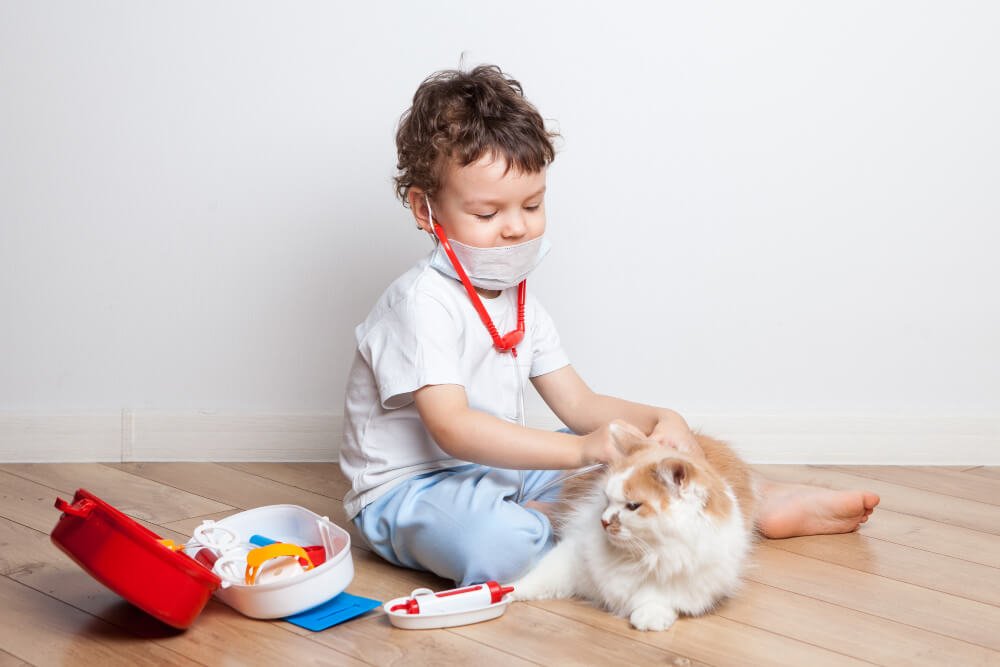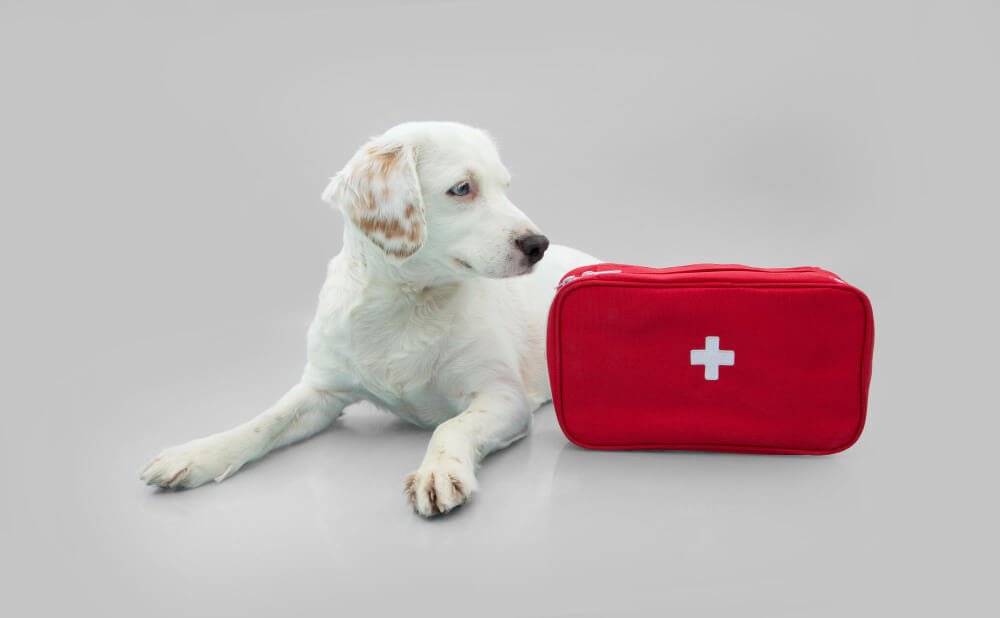This is since some mishaps and events cannot be prevented. Therefore, those in attendance must be equipped to carry out swift actions that could save the life of a dog or cat if they are in danger.
Additionally, as long as a person has theoretical and practical skills, they can administer first aid procedures on dogs and cats.
And in some circumstances, a first aid kit with supplies and essential objects that will help in the animal’s care is necessary to carry out the treatments.
What is pet first aid?
When a person’s life is in immediate danger or an emergency scenario, several steps are taken that are collectively referred to as first aid.
First aid, as the name implies, refers to emergency measures that must be taken to maintain vital signs until getting medical and veterinary care.
Even though incidents involving your pet may seem unlikely, they could happen anytime. like, for instance
- Fractures
- Burns
- Running over
- Allergy
- Deep cut
- choking
- Convulsions
- Intoxication
- Poisoning
First Aid for Dogs and Cats: How to do it
Several procedures can be performed in first aid for dogs and cats, but it is important to note that a trip to the vet is still required.
This is so that the animal can remain alive until a doctor arrives. First aid involves primary techniques, therefore the immediate goal is to maintain the animal’s health.
Check out some first aid techniques for dogs, cats, and many scenarios after that.

Run over and fractures:
This kind of incident happens frequently, so it’s best to stop traffic before taking any further action so you can provide the animal safe first aid.
Be cautious while approaching the animal because it will likely be in pain and more hostile.
Take the animal off the road slowly; avoid jerky movements that could aggravate potential fractures and injuries, particularly to the spine.
If you need to administer first aid for an open fracture, apply pressure to the wound with a clean towel to stop the bleeding. Under no circumstances should you attempt to put a bone back where it belongs.
Take the animal to the closest veterinarian facility as soon as possible to get the essential medical care.
It may be necessary to take the pet to the vet in some circumstances, even if it doesn’t seem to be hurt, so the doctor can rule out any internal organ damage.
Choking
Because the animal could run out of breath in a choking condition, restricting the trachea poses the most risk. Agility is therefore required in this circumstance.
Small animals should be picked up by the hind legs, suspended, and gently shaken with the goal of expelling the foreign object.
If the animal is medium or large in size, however, merely elevate the hind legs while leaving the front legs on the ground, and then gently shake until the thing emerges. Use the Heimlich technique, which is the same procedure performed on people, if the way mentioned above doesn’t work.
Release the animal and hold it by the waist while making sure it is facing away from you.
Apply three to five strong pressures directly below the pet’s ribcage with your fists placed there.
Take the animal to the vet once you’ve fixed it up to make sure there hasn’t been any inside harm.
Seizures

Muscle contractions that are not voluntary are a hallmark of seizures. It can occasionally be accompanied by drooling, gazing, bewilderment, loss of sphincter control, and unconsciousness.
Not much can be done in this situation. Simply make sure your pet is at ease during the occasion by taking away any items that could harm him and holding his head firmly to prevent bumps on the floor.
Take him to the vet after the seizure to determine the cause of the issue.
Intoxication or poisoning
Typically, intoxication and poisoning occur when an animal eats something it shouldn’t, meaning that the animal already has harmful material in its system.
Plants, medications, chemicals, and poisons can all result in poisoning, just like some meals do.
Try to determine what triggered the incident when you notice your pet intoxicated or poisoned.
Because the treatment will be more nimble and effective after the responsible agent has been identified. especially in poisoning instances.
So hurry to a veterinarian’s hospital with the animal.





Add comment